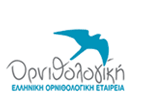| A1. Species of global conservation concern Category Criterion |
The site regularly holds significant numbers of a globally threatened species, or other species of global conservation concern. |
| A2. Restricted-range species |
The site is known or thought to hold a significant component of the restricted-range species whose breeding distributions define an Endemic Bird Area (EBA) or Secondary Area (SA). |
| A3. Biome-restricted species confined to one biome. |
The site is known or thought to hold a significant assemblage of the species whose breeding distributions are largely or wholly |
| A4. Congregations |
(i) The site is known or thought to hold, on a regular basis, ³ 1% of a biogeographic population of a congregatory waterbird species. |
|
(ii) The site is known or thought to hold, on a regular basis, ³ 1% of the global population of a congregatory seabird or terrestrial species. |
|
(iii) The site is known or thought to hold, on a regular basis, ³ 20,000 waterbirds or ³ 10,000 pairs of seabird of one or more species. |
|
(iv) The site is known or thought to be a ‘bottleneck’ site where at least 20,000 storks (Ciconiidae), raptors (Accipitriformes and Falconiformes) or cranes (Gruidae) regularly pass during spring or autumn migration. |
| B1. Congregations |
(i) The site is known or thought to hold ³ 1% of a flyway or other distinct population of a waterbird species. |
|
(ii) The site is known or thought to hold ³ 1% of a distinct population of a seabird species. |
|
(iii) The site is known or thought to hold ³ 1% of a flyway or other distinct population of other congregatory species. |
|
(iv) The site is a ‘bottleneck’ site where over 5,000 storks, or over 3,000 raptors or cranes regularly pass on spring or autumn migration. |
| B2. Species with an unfavourable conservation status in Europe |
The site is one of the ‘n’ most important in the country for a species with an unfavourable conservation status in Europe (SPEC 2, 3) and for which the site-protection approach is thought to be appropriate. |
| B3. Species with a favourable conservation status in Europe |
The site is one of the ‘n’ most important in the country for a species with a favourable conservation status in Europe but concentrated in Europe (SPEC 4) and for which the site-protection approach is thought to be appropriate. |
| C1. Species of global conservation concern |
The site regularly holds significant numbers of a globally threatened species, or other species of global conservation concern. |
| C2. Concentrations of a species threatened at the European Union level |
The site is known to regularly hold at least 1% of a flyway population or of the EU population of a species threatened at the EU level (listed on Annex I and referred to in Article 4.1 of the EC Birds Directive). |
| C3. Congregations of migratory species not threatened at the EU level |
The site is known to regularly hold at least 1% of a flyway population of a migratory species not considered threatened at the EU level (as referred to in Article 4.2 of the EC Birds Directive) (not listed on Annex I). |
| C4. Congregatory – large congregations |
The site is known to regularly hold at least 20,000 migratory waterbirds and/or 10,000 pairs of migratory seabirds of one or more species. |
| C5. Congregatory – bottleneck sites |
The site is a ‘bottleneck’ site where at least 5,000 storks (Ciconiidae) and/or at least 3,000 raptors (Accipitriformes and Falconiformes) and/or 3,000 cranes (Gruidae) regularly pass on spring or autumn migration. |
| C6. Species threatened at the European Union level |
The site is one of the five most important in the European region (NUTS region) in question for a species or subspecies considered threatened in the European Union (i.e. listed in Annex I of the EC Birds Directive). |
| C7. Other ornithological criteria |
The site has been designated as a Special Protection Area (SPA) or selected as a candidate SPA based on ornithological criteria (similar to but not equal to C1–C6) in recognized use for identifying SPAs. |





